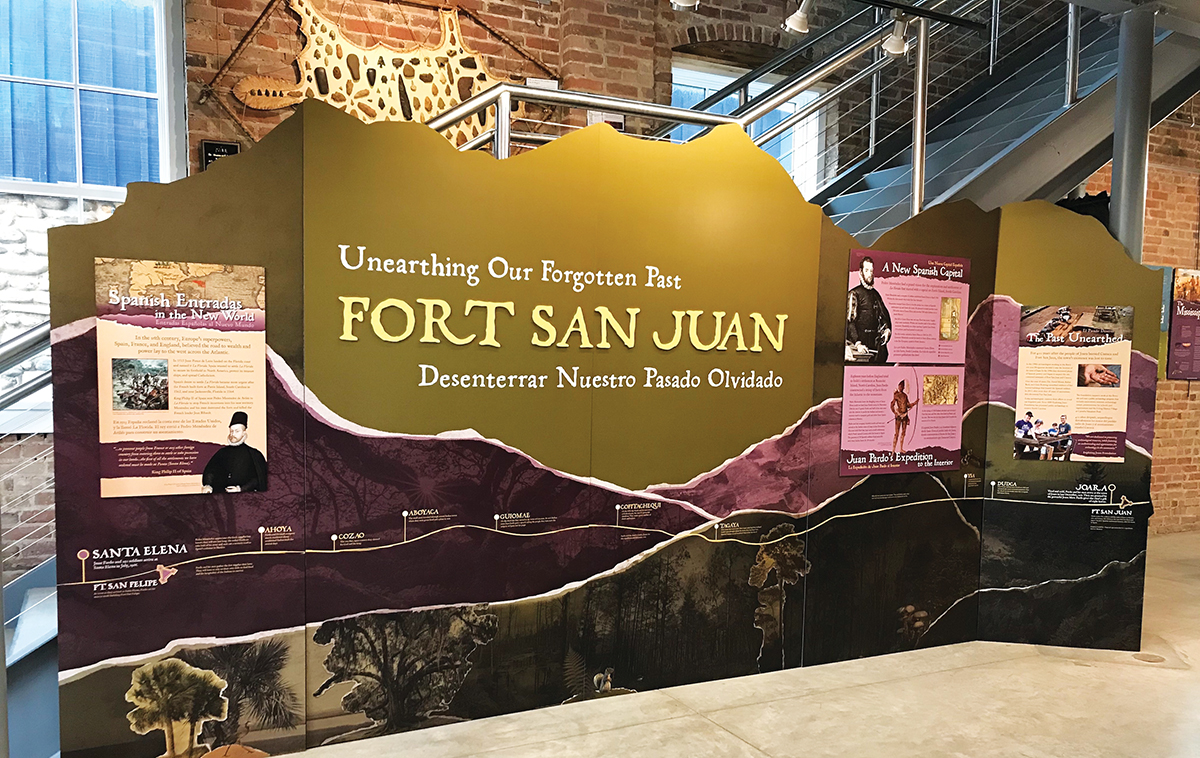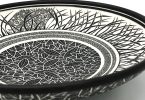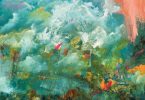
Fort San Juan exhibit. Photos courtesy of Swannanoa Valley Museum & History Center
By Lauren Stepp
Bear meat ruined it. Or maybe sexual impropriety. Centuries later, historians can only surmise what happened.
Whatever prompted natives to destroy Fort San Juan marked a “significant instance of indigenous people successfully resisting European colonization,” says Saro Lynch-Thomason, assistant director of the Swannanoa Valley Museum & History Center. The museum is currently hosting Unearthing Our Forgotten Past: Fort San Juan, a traveling exhibit produced by the Exploring Joara Foundation and available for viewing through April 2021.
In the mid-16th century, just eight miles north of present-day Morganton, sat the Native American chiefdom, or polity, of Joara. Several hundred townspeople lived in square wattle and daub buildings with roofs of thatch or bark. They grew maize, beans and squash and supplemented with meats and plants foraged from the lush woodlands. Established at the nexus of several trade routes, Joara was connected to northwestern GA, eastern TN, southwestern VA and the SC Piedmont. Spanish explorer Juan Pardo founded a fort in Joara in the winter of 1566. He and his troops had been ordered into the southeast from Santa Elena in what is today Parris Island, SC. “Pardo was tasked with claiming the lands for Spain, pacifying the native residents and forging an overland route from Santa Elena to the Spanish silver mines in Zacatecas, Mexico,” says Lynch-Thomason.
Upon arriving at Joara, Pardo ordered local leaders to build a house for the expedition and fill it with maize. Meanwhile, a priest with the expedition, Father Sebastian Montero, catechized natives and founded a mission at Guatari, near present-day Salisbury.
The troops and Joarans maintained cordial relations for several months. Excavations suggest the conquistadors consumed bear meat—a highly prized commodity harvested by the townspeople— during the beginning of their tenure. And then, in the months preceding the fort’s leveling, the consumption of meat stopped.
“We will never have a complete picture of what triggered the attacks on San Juan, but there are two likely predominant factors: the Spaniards’ demands for food and their impropriety with Indian women,” says Lynch-Thomason.
The Spaniards felt owed sustenance, while the natives perceived food as an exchange for goods and services. When trade items ran dry, the townspeople stopped delivering victuals.
As for sexual interactions, before leaving troops at Guatari, Pardo commanded “that no one should dare bring any woman into the fort at night and that he should not depart from the command under pain of being severely punished.” Still, Pardo’s warnings likely did little to quell improprieties.
“By May of 1568, news reached Santa Elena that all of Spain’s interior forts had fallen,” Lynch-Thomason says. “All six forts had been attacked by Indians and destroyed.” She noted that this would color colonization for centuries. “No other Europeans would travel so far into the southern interior until the last quarter of the 17th century.”
The Swannanoa Valley Museum & History Center is located at 223 West State Street in Black Mountain. Masks are required. For more information, visit History.SwannanoaValleyMuseum.org.






